It’s been a long lockdown for one of our favourite makers, Pi & Chips. Like most of us (probably), they have turned their hand to training small animals that wander into their garden to pass the time — in this case, pigeons. I myself enjoy raising my glass to the squirrel that runs along my back fence every evening at 7pm.
-
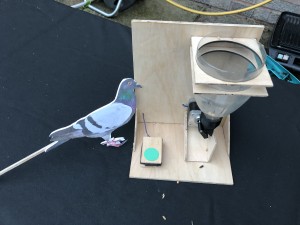
Mock Frank the pigeon -
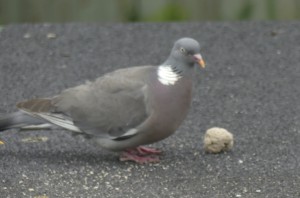
Real Frank the pigeon
Of course, Pi & Chips has taken this one step further and created a food dispenser including motion-activated camera with a Raspberry Pi 3B+ to test the intelligence of these garden critters and capture their efforts live.
Bird behaviour
Looking into the cognitive behaviour of birds (and finding the brilliantly titled paper Maladaptive gambling by pigeons), Pi & Chips discovered that pigeons can, with practice, recognise objects including buttons and then make the mental leap to realise that touching these buttons actually results in something happening. So they set about building a project to see this in action.
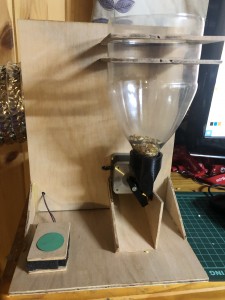
Enter the ‘SmartFrank 3000’, named after the bossiest bird to grace Pi & Chips’s shed roof over the summer.
Steppers and servos
The build itself is a simple combo of a switch and dispenser. But it quickly became apparent that any old servo wasn’t going to be up to the job — it couldn’t move fast enough to open and close a hatch quickly or strongly enough.
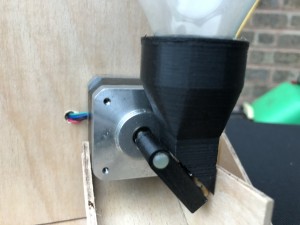
Running a few tests with a stepper motor confirmed that this was the perfect choice, as it could move quickly enough, and was strong enough to hold back a fair weight of seed when not in operation.
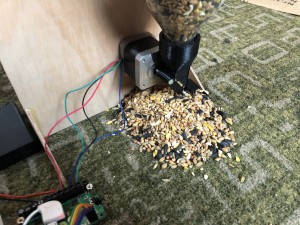
A 3D-printed flap for the stepper was also fashioned, plus a nozzle that fits over the neck of a two-litre drinks bottle, and some laser-cut pieces to make a frame to hold it all together.
The switch
Now for the switch that Frank the pigeon was going to have to touch if it wanted any bird seed. Pi & Chips came up with this design made from 3mm ply and some sponge as the spring.
-
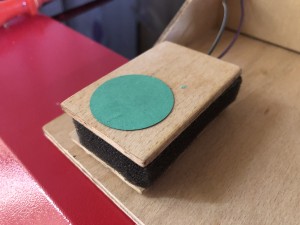
They soldered some wires to a spring clip from an old photo frame and added a bolt and two nuts -
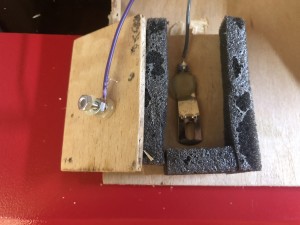
The second nut allowed for very fine adjustment
They soldered some wires to a spring clip from an old photo frame and added a bolt and two nuts. The second nut allowed very fine adjustment of the distance to make sure the switch could be triggered by as light a touch as possible.
Behind the scenes
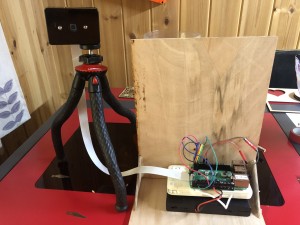
Behind the scenes there’s a Raspberry Pi 3B+ running the show, together with a motor controller board for the stepper motor. This board runs from its own battery pack, as it needs 12V power and is therefore too heavy for Raspberry Pi to handle directly. A Raspberry Pi Camera Module has also been added and runs this motion detection script to start recording whenever a likely bird candidate steps up to the plate for dinner. Hopefully, we can soon get some footage of Frank the pigeon learning and earning!
The post Teaching pigeons with Raspberry Pi appeared first on Raspberry Pi.
from Raspberry Pi Blog – Raspberry Pi https://ift.tt/349IB0x
https://ift.tt/3g2aSsc


No comments:
Post a Comment
Please do not enter any spam link in the comment box.